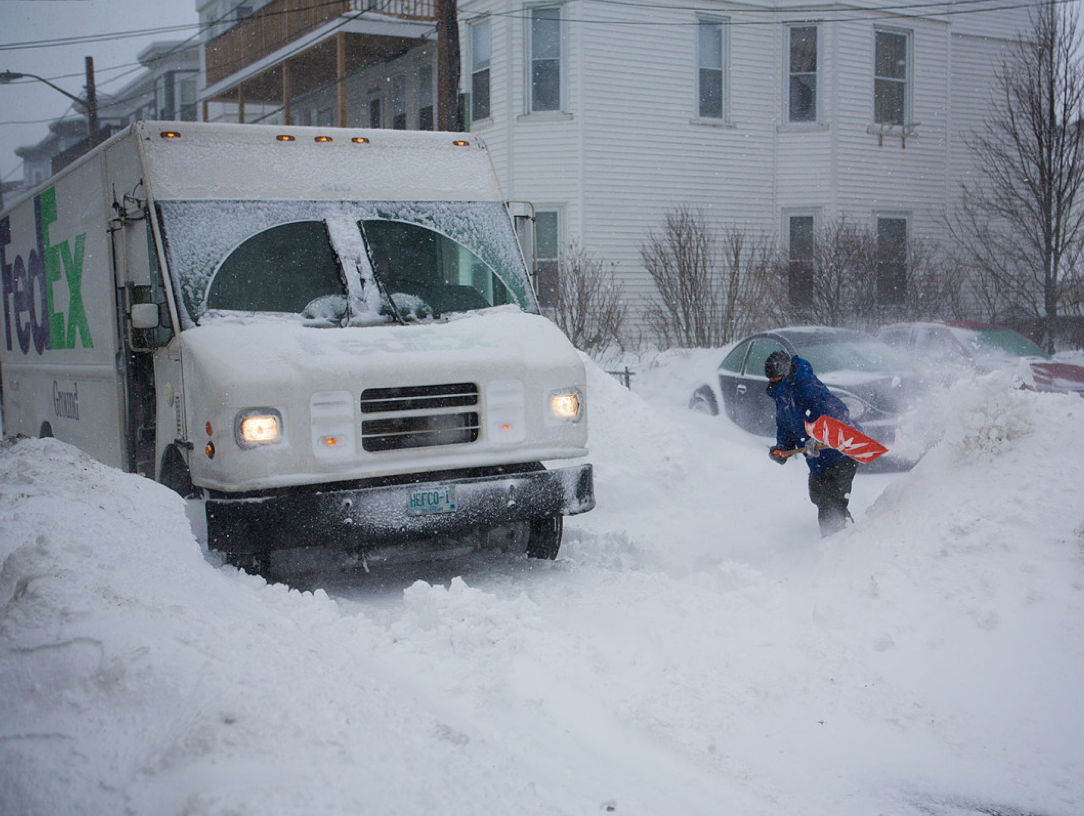Drive to Survive Tips for Winter Conditions
With winter weather is expected to hit many parts of North America, creating dangerous driving conditions for motorists, a leading trade group has tapped into elite professional drivers for tips on how best to survive the storms.
“Before we start a trip at our truck driving jobs, we take the time to do a pre-trip inspection, making sure that our vehicle is ready to go out on the road,” said America’s Road Team Captain John Lex (Walmart Transportation). “You might also want to consider packing a bag of goods – blankets, food and other items that you might need in case you are stranded on the road.”
“If you really don’t have to go anywhere during bad weather conditions, stay at home, that’s the safest place to be,” advised America’s Road Team Captain Russ Simpson (Holland).
America’s Road Team urges people to stay off the roads during adverse conditions, but for those who must get out, the the group compiled this list of tips for drivers:
- Buckle up: Safety belts reduce the risk of fatal injury by 45% and are a simple way to increase your safety on the road.
- Slow Down: brakes are less responsive on icy roads and other drivers may make unpredictable moves because they are being cautious. Allow plenty of space between you and other vehicles and reduce your speed
- Remove ice and snow from your vehicle: Clear your windows and roof of snow to insure you have maximum visibility and avoid creating a hazard for the vehicle behind you. Don’t allow ice and snow to create additional blind spots on your vehicle.
- Prepare your vehicle for long distance travel: Check your wipers and fluids. Have your radiator and cooling system serviced. Simple maintenance before you leave your home can prevent many of the problems that strand motorists on the side of the road.
- Be aware of the vehicle in front of you: Leave extra room between you and the vehicle in front so you can avoid snow and ice blowing onto your windshield or maneuver around patches of ice.
- Do not cut in front of large trucks: Remember that trucks are heavier and take longer to make a complete stop, so avoid cutting quickly in front of them.
- Be aware of truck blind spots: When sharing the road with large trucks, be aware of their blind spots. If you can’t see the truck driver in his or her mirrors, then the truck driver can’t see you.
- Keep your eyes on the road: Distracted driving is a major cause of traffic accidents. Even just two seconds of distraction time doubles the chances of an accident. Use your cell phone when stopped and never text while driving.
- Plan ahead: Before you get on a highway, know your exit by name and number, and watch the signs as you near the off-ramp. Drivers making unexpected lane changes to exit often cause accidents.
- Check your emergency kit: Contents should include: battery powered radio, flashlight, blanket, jumper cables, fire extinguisher, first aid kit, bottled water, non-perishable foods, maps, tire repair kit and flares.
- Be aware of changes in weather: Weather conditions across the U.S. will be changing – especially during early mornings and evenings. Watch for ice, snow and other weather related obstacles and be aware of any temperature changes.
- Leave early and avoid risks: Leave early so you won’t be anxious about arriving late and to accommodate delays. Road conditions may change due to inclement weather or traffic congestion.
- Avoid extreme weather conditions: Ice, hail and snow make roads difficult to travel. Try to avoid driving through extreme weather conditions, and travel during daylight.
Category: Featured











